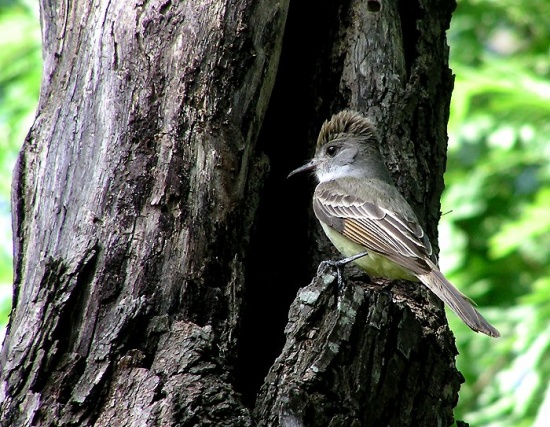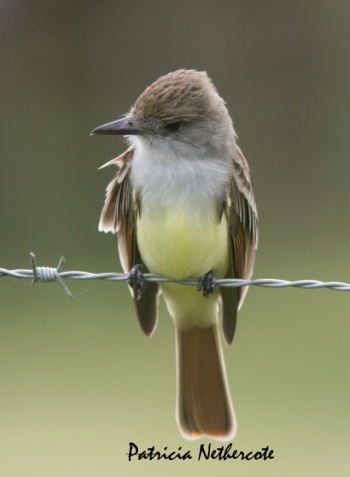- Myiarchus tyrannulus
Includes Wied's Crested Flycatcher
Identification
19cm
- Olive-brown upperparts
- Yellow underparts
- Pale grey throat and breast
- Short dark crest
- Pale wing bars
- Primaries edged rufous but secondaries edged lemon-yellow
- Brown tail (rufous on inner webs usually visible from underside of tail)
- Large, dark bill
Sexes similar
Similar Species
Ash-throated Flycatcher, and especially in southern Mexico, Dusky-capped Flycatcher and Yucatan Flycatcher
Distribution
Southwestern United States in southeastern corner of California, most of Arizona and southern Texas; also rare in Nevada and Utah south to northern Argentina, Brazil and the Guianas.
Casual to rare vagrant in Louisiana and Florida.
Taxonomy
Subspecies[1]
This is a polytypic species which consists of 7 subspecies:
- M. t. magister: Wied's Crested Flycatcher[2]
- M. t. cooperi:
- M. t. cozumelae:
- Cozumel Island (off Yucatán Peninsula of eastern Mexico)
- M. t. insularum:
- Utila, Roatán and Bonaca islands (off Honduras)
- M. t. brachyurus:
- Pacific coast of El Salvador to north-western Costa Rica
- M. t. tyrannulus:
- M. t. bahiae:
An additional subspecies M.T. nelsoni is generally considered invalid [2]
Habitat
Riparian woodlands, saguaro cactus desert, dry forest and gardens.
Behaviour
Diet
The diet includes insects and fruit.
Breeding
It builds its nest in a tree cavity. The clutch consists of 2-3 purple-marked cream eggs.
References
- Clements, JF. 2009. The Clements Checklist of Birds of the World. 6th ed., with updates to December 2009. Ithaca: Cornell Univ. Press. ISBN 978-0801445019.
- Avibase
- Wikipedia
- BF Member observations
Recommended Citation
- BirdForum Opus contributors. (2024) Brown-crested Flycatcher. In: BirdForum, the forum for wild birds and birding. Retrieved 19 April 2024 from https://www.birdforum.net/opus/Brown-crested_Flycatcher





